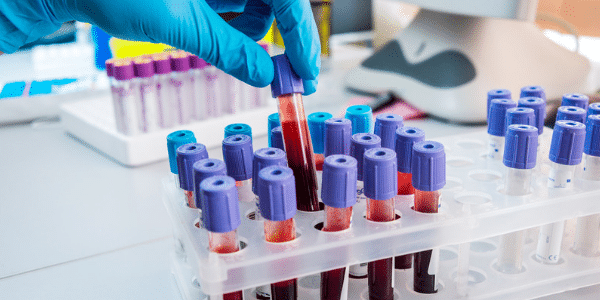On October 24, 2018, the Food and Drug Administration (FDA) approved a new diagnostic test that can define a woman’s menopausal status.
How Menopause Was Diagnosed in the Past
Discussing physical signs and symptoms with patients is one way that doctors have assessed how close a woman is to menopause. Certain blood hormone tests have been used to further distinguish between active menopause and other conditions that mimic menopause.
Follicle stimulating hormone (FSH) has been tested, because it is known that FSH levels increase during menopause. Estrogen (estradiol) is also often tested in the process, because declining levels of estrogen are another possible indicator of menopause.
Doctors may test the level of thyroid stimulating hormone (TSH) to see if it is elevated. Abnormal TSH levels can be indicative of hypothyroidism (underactive thyroid gland), which presents symptoms similar to those seen in menopausal women.
New Test for Evaluating Menopausal Stage
The new test, picoAMH Elisa, for judging when a woman is likely to experience menopause is important because FSH and estrogen levels cannot predict the timing. These two hormones fluctuate throughout the monthly cycle, and results would not be accurate in women on birth control pills or hormone therapy.
The picoAMH Elisa test results cannot be used to establish a woman’s fertility level and cannot replace a complete clinical workup for ovarian reserve in women who are taking or planning to take fertility drugs.
The purpose of the picoAMH Elisa test is to measure blood levels of Anti-Müllerian hormone (AMH). The level of AMH in the blood is an indication of whether the final menstrual period has already happened or is likely to happen in the near future.
Ansh Lab markets the picoAMH Elisa test, which is trademarked MenoCheck.
FDA officials have warned health care providers not to take the test results as a definitive diagnosis without partnering the results with other laboratory tests and clinical evaluations.
Care should be taken not to discontinue birth control in women who have not been diagnosed as having completed menopause. In women who have had irregular bleeding during menopause, there may be a danger of ignoring a symptom of cervical cancer, assuming the bleeding variation is a normal part of “the change.”
Studies Performed on the PicoAMH Elisa Test
 The FDA released results from a longitudinal study performed on 690 women between the ages of 42 and 62 by the Study of Women’s Health Across the Nation. The data reviewed showed the picoAMH Elisa Test to effectively gauge the Anti-Müllerian hormone levels and identify which women were past their last monthly period and which had as many as five years to go before the completion of menopause
The FDA released results from a longitudinal study performed on 690 women between the ages of 42 and 62 by the Study of Women’s Health Across the Nation. The data reviewed showed the picoAMH Elisa Test to effectively gauge the Anti-Müllerian hormone levels and identify which women were past their last monthly period and which had as many as five years to go before the completion of menopause
Stages of Menopause
What to Expect During Perimenopause
During perimenopause, transition to menopause, a woman’s ovaries produce erratic levels of estrogen and progesterone. Reduced levels of these hormones cause women to experience decreased bone density, making fractures more likely to happen.
Another result of the drop in estrogen and progesterone levels in perimenopause is an elevation in the LDL blood cholesterol level (known as “bad cholesterol”). LDL is called bad cholesterol because it contributes to plaque build-up in the arteries, likely leading to heart disease.
What is Menopause?
Menopause is the phase of a woman’s life when menstrual periods become irregular and may change in frequency and amount, from scanty to heavy flow, with irregular intervals. When 12 months go by with no menstrual periods, a woman is no longer fertile and can safely discontinue birth control.
During menopause, hot flashes, night sweats, irritability and difficulty sleeping add to irregular periods to cause varying degrees of discomfort. Some women choose hormone therapy to ease the way to post-menopause.
The Postmenopause Phase
Women in the post-menopause stage need to discuss with their doctors what interventions need to be made to protect them from porous bones (osteoporosis) and the potential onset of heart disease. Bone-strengthening medications, calcium/magnesium supplements and continued hormone replacement may be prescribed for women in post-menopause.
Any menstrual-like bleeding during this stage may signal cervical polyps/cancer or endometrial abnormalities that may signal uterine cancer. Having the picoAMH Elisa test during perimenopause or early menopause can help a woman and her doctor take steps to prevent some of these catastrophic conditions in later years.





